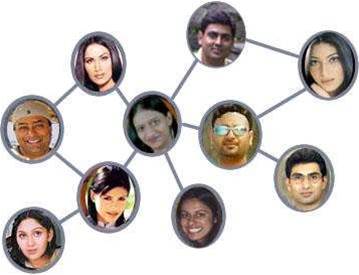
Speaking at the NetEvents Asia-Pacific Press Summit in Malaysia last month, Ling described social networking as activities ranging from the production of prehistoric cave drawings to modern-day cocktail functions.
“A bunch of people with similar interests and similar backgrounds got together and exchanged information -- that’s social networking,” he said.
In recent times, the uptake of online social networking by enterprise workers has given employers cause for grief.
Businesses are dealing with an avalanche of network security, bandwidth and managerial issues to do with how employees use social networking Web sites during company time.
An influx of fresh-faced Generation Y employees has put added pressure on employers to enable tools such as instant messaging and online social networks in the workplace.
And with the overall up-and-go response of the new generation of workers to draconian Web site bans, employers may be forced to redefine their outlook on such technologies to remain competitive.
Ling highlighted business card exchanges and other interactions that took place at the NetEvents Asia-Pacific Press Summit as forms of social networking.
He encouraged conference attendees to realise the potentials of social networking technologies for collaboration and innovation.
“We’re already social networking,” he pointed out.
“If you stop looking at social networking as a ‘thing’, and really look at it as a base communication between individuals, it starts to make sense.”
“No great idea has ever been dreamt up by one sole individual. It’s a collaborative effort,” he said.
Enterprise software vendors have been quick to jump on the social networking bandwagon with the introduction of enterprise products such as KickApps, Passenger and hi5.
A recent report from analyst firm IDC expects the market for enterprise social networking products to reach US$2 billion by 2012.
Meanwhile, a diverse spectrum of options exists for social networkers in the consumer space, with the likes of MySpace, Facebook and Bebo competing for a piece of the pie.
Ling said that the diverse social networks reflect similarly diverse interest groups and backgrounds of individual Internet users.
“Social networking is really factioned,” Ling said. “MySpace skews younger and female. Facebook skews older and male.”
“If there was only one social network, and one social networking technology, Orwell was right and it is kind of scary,” he said.
Noting that social networking technology is still in its early stages, Ling expects the business potentials of online social networks to include the delivery of subscription-based services, and targeted advertising.
Future use of social networking technologies is expected to be driven by the proliferation of mobile devices such as ultraportable “Netbook” computers.
“It’s just a matter of how the technology evolves,” Ling said. “I really do think that mobile, and social networking on mobile [devices], is the next generation of technology.”











 iTnews Executive Retreat - Security Leaders Edition
iTnews Executive Retreat - Security Leaders Edition












_(1).jpg&h=140&w=231&c=1&s=0)



